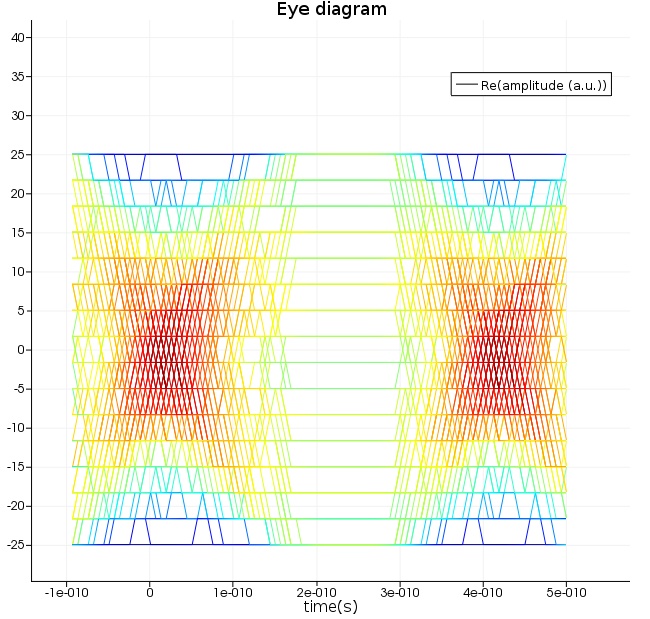Ansys Lumerical FEEM (Finite Element EigenMode), a Maxwell solver based on the expansion algorithm, offers superior accuracy and performance scaling.
With Ansys Lumerical FEEM (Finite Element EigenMode), rapidly calculate and analyze 2D cross-section modes of waveguides or fibers supported in the frequency range.
Additionally, since TDR pulses may have trouble moving forward after several reflections, Frequency Domain Reflectometry (FDR) analysis in FEEM is better suited for engineers locating and describing a series of multiple deterioration episodes in lengthy cables.
Optically propagate a signal through a metal tine or another wave path in Ansys FEEM by seamlessly deploying oscillators. To gauge soil moisture, the difference in frequency between the output wave and the return wave is monitored.
Traditional time domain reflectometry (TDR), which is best suited for locating open and short circuit situations in conductors, may not be as sensitive to cable degradation as the FDR method due to its inherent benefits.
Because there are filtering and noise-reducing techniques in the frequency domain, for instance, FDR is less vulnerable to electrical noise and interference. Increased sensitivity and accuracy may result from this.
Additionally, since TDR pulses may have trouble moving forward after numerous noteworthy reflections, FDR analysis in FEEM is better suited for locating and describing a series of multiple deterioration episodes in lengthy cables.
In Ansys FEEM, The Fourier Transform and Plot/Modify Input Signal dialog boxes allow engineers to set several different functions for the x and y axes, apply different FFT windowing techniques, and set various output options.
Acting as a tool for signal decomposition for further filtration, engineers can visualize the material separation of the various signal components. This process of bridging the gap between these two worlds (time and frequency domain) is paramount to RF engineers.
Engineers can easily apply the various Discrete Fourier Transform calculation methods using FEEM, starting with the application of the Fourier Transform, moving on to the simplified calculation technique, and concluding with the Cooley-Tukey method of the Fast Fourier Transform.
Engineers can use the (n,k) Material import object in Ansys FEEM to transform spatially variable stress or strain into a spatially variable refractive index profile.
It is crucial to distinguish between circumstances that will cause diagonal anisotropy and those that won’t when introducing the spatially variable refractive index owing to stress or strain. Using a nk import material, which is accessible in Ansys FEEM, FDTD, and MODE, it is simple to address the diagonal anisotropy that is the focus of this example.
It will be essential to diagonalize the permittivity tensor and perform a matrix transformation to add the influence of the strain if the stress or strain produces a permittivity tensor with off-diagonal elements. Matrix transformation makes it simple to set up the matrix transform grid properties and specific stress inputs while also providing engineers with visual assistance to help them choose the best application.

Functionality and practical photonic applications
Designers can model interacting optical, electrical, and thermal effects thanks to tools that seamlessly integrate device and system level functionality. A variety of processes that combine device multiphysics and photonic circuit simulation with external design automation and productivity tools are made possible by flexible interoperability between products.